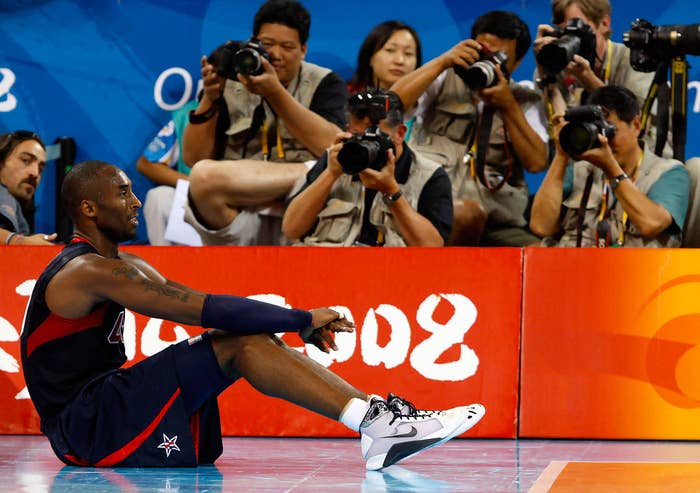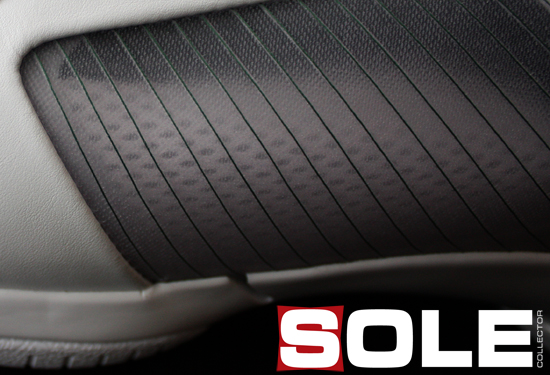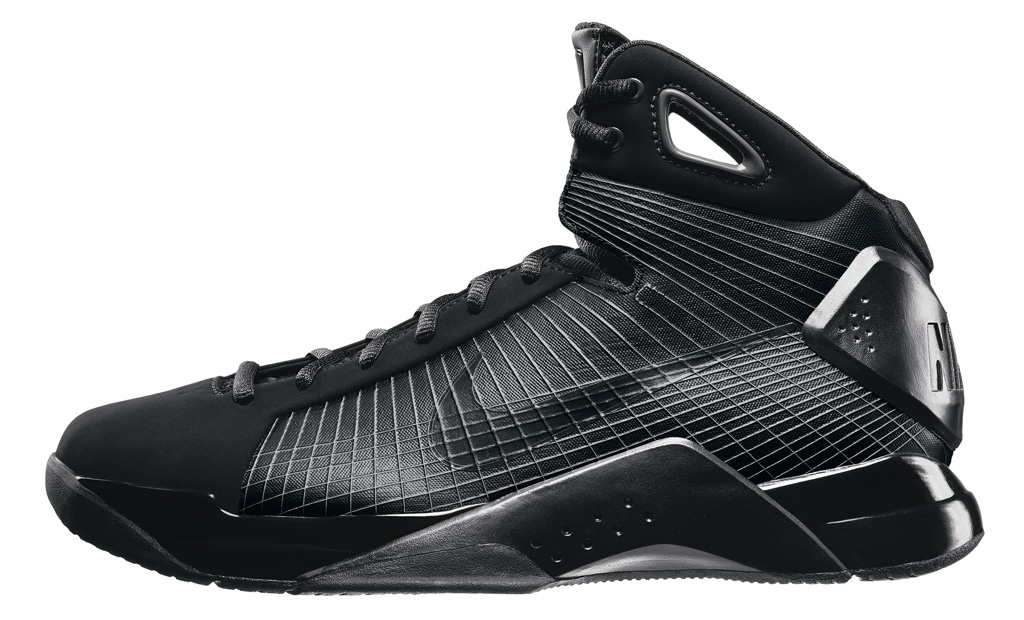1.

by Brandon Richard
The clock wound down in Beijing, as a very sound team from Spain pushed a star-studded Team USA to its limit. But behind a clutch performance by Kobe Bryant, the Americans triumphantly reclaimed their spot atop basketball’s hierarchy. They were officially the “Redeem Team.”
The 2008 Olympic Games put the USA Basketball Team in an unfamiliar position. Once invincible, the group found themselves hungry to recapture the gold medal it had failed to win four years earlier. The unfortunate set of circumstances, however, played a key role in rebranding USA Basketball, regaining the attention of the best players, and creating a new avenue for product introduction.
2.

Beijing wasn’t only a showcase of the world's greatest competitors — it was a platform for marketing sportswear in the new social age. This was particularly so for Nike, which used the global stage to redefine product placement. Among its myriad of unveilings was the Hyperdunk, an innovative basketball sneaker that embraced the category’s evolving “lightweight” landscape.
 Not just for show, the Hyperdunk was a true performance innovation, most notably marking the debut of Flywire. As the brand continued to adapt to the lightweight performance market, Vectran fiber wires replaced traditional leather panels to reduce bulk, without sacrificing any of the needed support. Flywire was originally conceived for featherweight track spikes by Jay Meschter in Nike’s Innovation Kitchen. The application was borrowed from a modern architectural marvel — suspension bridges.
Not just for show, the Hyperdunk was a true performance innovation, most notably marking the debut of Flywire. As the brand continued to adapt to the lightweight performance market, Vectran fiber wires replaced traditional leather panels to reduce bulk, without sacrificing any of the needed support. Flywire was originally conceived for featherweight track spikes by Jay Meschter in Nike’s Innovation Kitchen. The application was borrowed from a modern architectural marvel — suspension bridges.
“We were looking to do it in an expressive way," said designer Eric Avar. "Let’s reduce everything else around it and let the Nike Flywire come to life.”
Another new innovation, NASA-developed Lunarlon cushioning, was used in a basketball shoe for the first time on the Hyperdunk. The setup was one of several key performance elements that borrowed from the design of the almost mythical Nike Mag. One of Avar’s finest creations, the Hyperdunk was a statement from Nike: performance was back at the forefront. They hadn’t talked up a new basketball technology on this level since 2000’s Shox.
But the Hyperdunk’s story didn’t begin with the Olympics. Months earlier, the rollout was led by Bryant, who had successfully pitched the resurrected Huarache and was three models deep into his own signature line. Using Internet-based viral videos in place of the usual commercial productions, Nike first spread the word by having Bryant leap over a speeding Aston Martin, then a snake pool with the kids from Jackass. Nike wasn’t only showing its progressive approach to product, but advertising as well.
However, the Hyperdunk still needed a “moment” to be legitimized — and that’s the role Beijing played. Between signature shoes, Bryant made the shoe his weapon of choice in a pursuit of his first Olympic gold medal. But it wasn’t just Bryant wearing the Hyperdunk, or even Team USA for that matter. Every Nike-sponsored team was laced up in a custom team colorway of the Hyperdunk that made it stand out as the shoe of the tournament. The versatile sneaker was even worn by bigs like Chris Bosh, Carlos Boozer and Pau Gasol. It wasn't a point guard or big man shoe — it was an every man shoe.
Technology introduced on the Hyperdunk would become the foundation for Nike Basketball releases and shape the category as a whole for years to come. The Kobe 4 and LeBron 7, arguably each athlete's most popular model, were offspring of the Hyperdunk. And shortly after its launch, competing brands followed suit by introducing their own lightweight top level team sneakers, even adopting the same higher-top-end and lower-heel design concept.
The Hyperdunk's success on the hardwood also translated to success at cash registers. It was a hot mover for Nike and retailers like Eastbay had trouble keeping pairs in stock. Subsequent versions have also cracked industry analysts's best-sellers lists.
Today, the line is 7 models deep following the recent launch of the Hyperdunk 2015. Bringing things full circle, designer Leo Chang once again looked to the Nike Mag for inspiration. And like all of the previous versions, Flywire harnesses the ride. In 2013, Forbes reported that more NBA athletes were wearing the Hyperdunk (80) than there were adidas endorsed athletes as a whole (71).
The original Hyperdunk was more than a basketball shoe — it was a moment in time. Michael Jordan took over Barcelona in the Air Jordan 7. Vince Carter scaled a 7-footer in the Shox BB4. And Kobe led redemption efforts in the Hyperdunk. Throw in an unforgettable marketing campaign, widespread influence and groundbreaking technology, and it's one of the truly great basketball sneakers ever created.
4.



